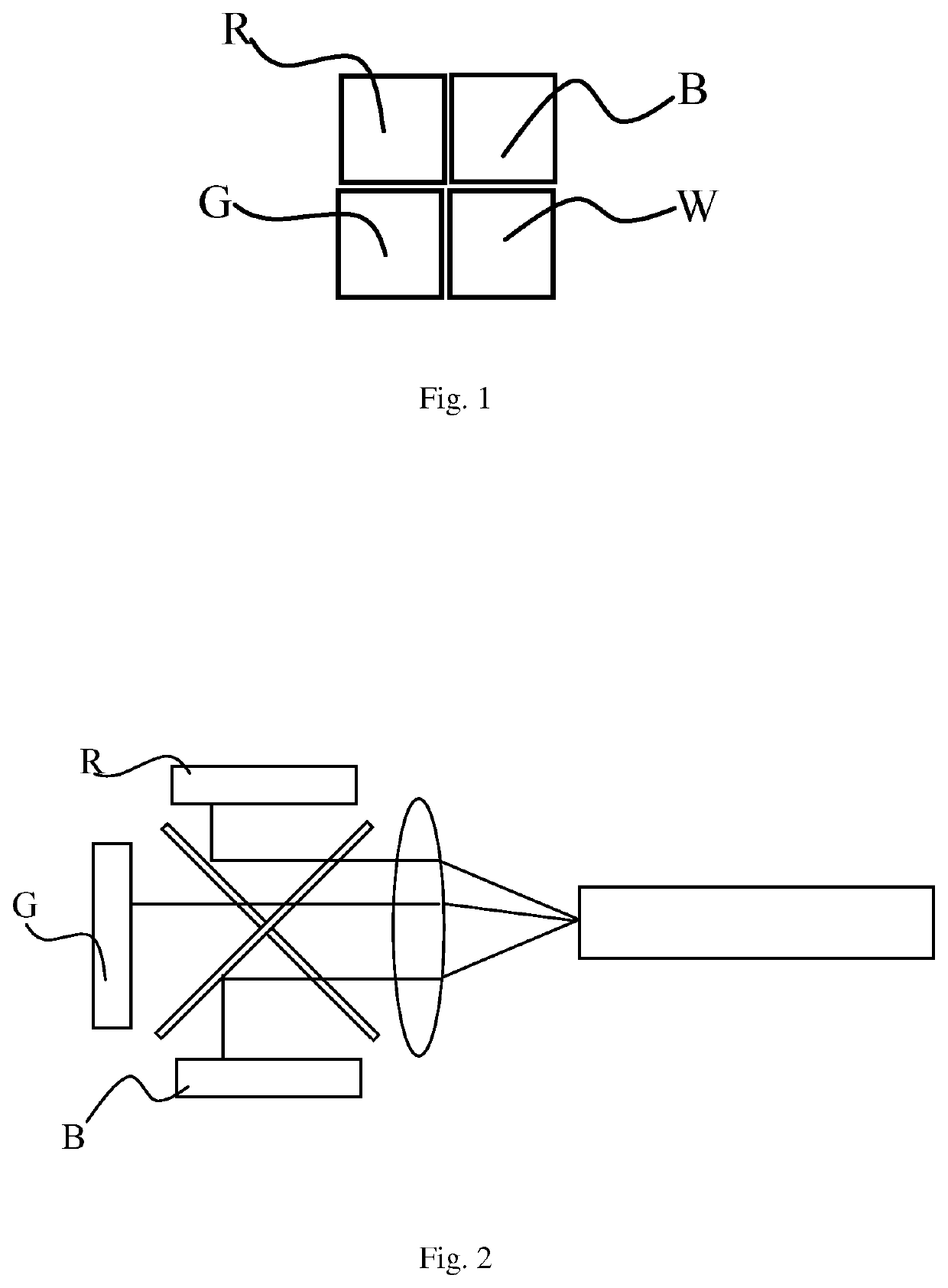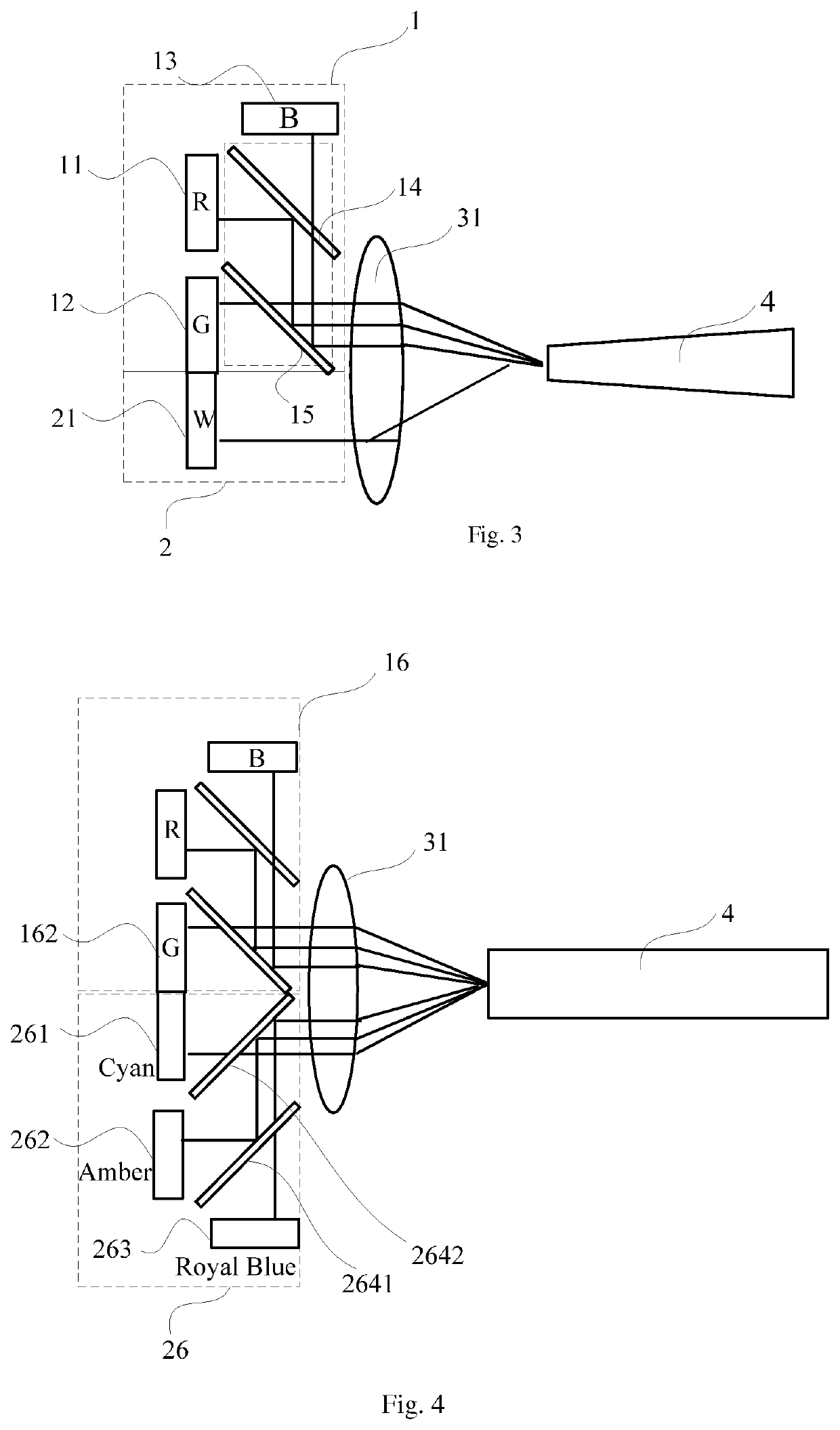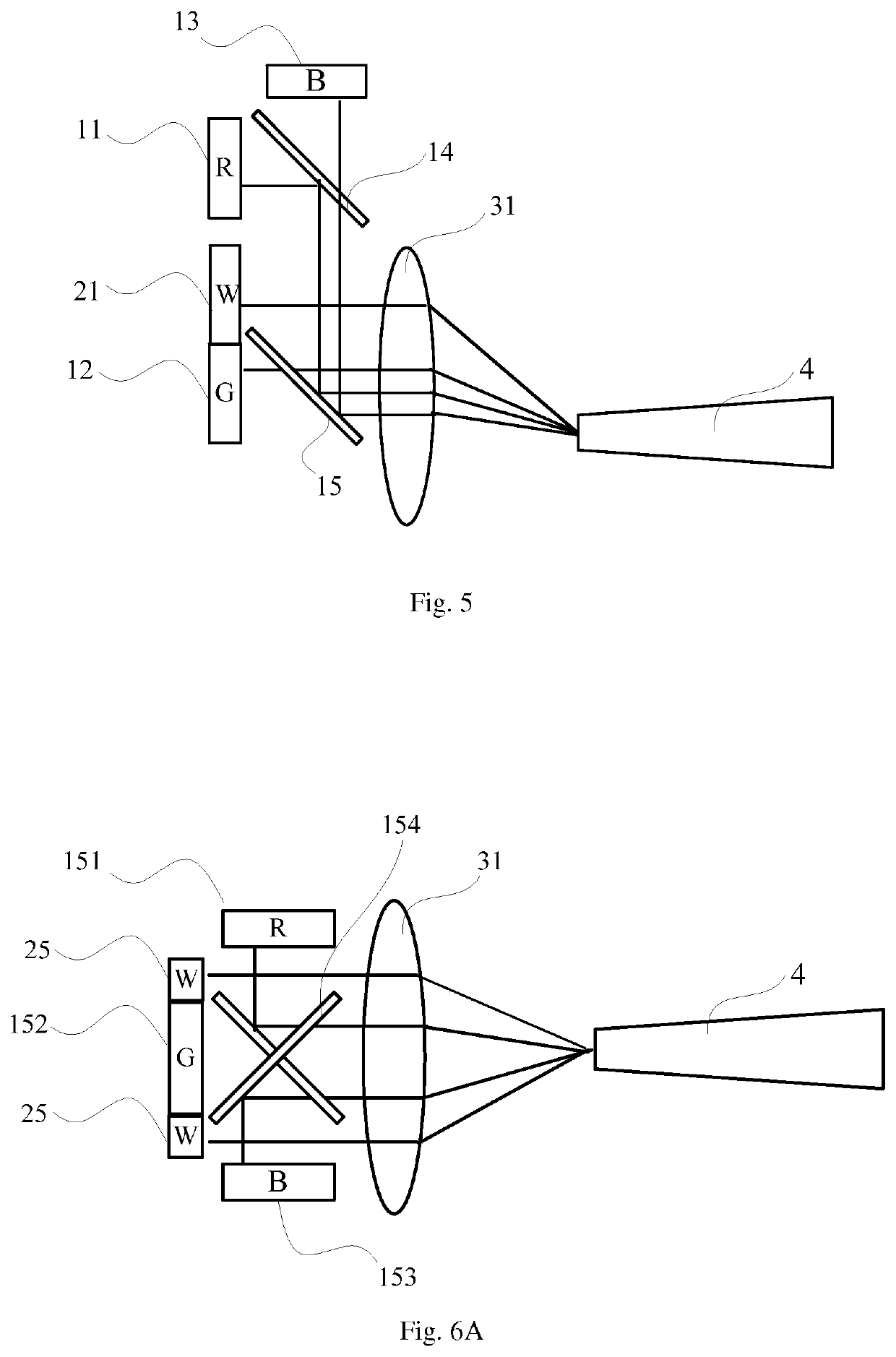Light source and display system
a light source and display system technology, applied in the field of solid-state lighting, can solve the problems of limited brightness and inability to generate high-brightness ligh
- Summary
- Abstract
- Description
- Claims
- Application Information
AI Technical Summary
Benefits of technology
Problems solved by technology
Method used
Image
Examples
embodiment one
[0047]FIG. 3 illustrates an embodiment of the light source of the present invention. In the present embodiment, the light beams from the original light emitting device group and the supplementary light emitting device group are finally output on different cross sections of the geometric-based light combining device. For easier explanation, in the following text words ‘upper, ‘lower are used to describe the spatial relationship of the various elements, and refer to upper side and lower side in the Figure respectively.
[0048]Refer to FIG. 3, in the present embodiment, in particular the original light emitting device group including three primary color LED is used as an example for explanation. Specifically the original light emitting device group 1 includes a red LED 11 (labeled in the Figure as R), a green LED 12 (labeled in the Figure as G) and a blue LED 13 (labeled in the Figure as B). People skilled in the art should know that in fact there is no limit to the amount of the LED use...
embodiment two
[0060]FIG. 4 illustrates an alternative embodiment of the light source. The light beams finally output from an original light emitting device group and a supplementary light emitting device group are still not on a same cross section of a geometric-based light combining device. But in the embodiment described above the supplementary light emitting device group consists of a white LED; in fact to achieve the goal of supplementary lighting, the supplementary light emitting device group can consists of multiple LED whose spectra have large overlaps with any LED in the original light emitting device group.
[0061]As shown in FIG. 4, the supplementary light emitting device group 26 includes, for example, a cyan LED 261 (labeled in the Figure as Cyan), an amber LED 262 (labeled in the Figure as Amber), a royal blue LED 263 (labeled in the Figure as Royal Blue). The three light beams output from the cyan LED 261, the amber LED 262 and the royal blue LED 263 are combined by a wavelength-based...
embodiment three
[0068]In embodiment one and embodiment two described above, the supplementary light emitting device group is entirely located below the original light emitting device group; of course the supplementary light emitting device group can also be entirely located above the original light emitting device group. In fact, the supplementary light emitting device group can also be located between two LED of the original light emitting device group, such as in an alternative embodiment of the light source of the present invention shown in FIG. 5.
[0069]A difference between the light source of the present embodiment and the light source of embodiment one is that the white LED 21 which plays the role of the supplementary light emitting device group is located between the red LED 11 and the green LED 12 of the original light emitting device group.
[0070]The inner structure of the original light emitting device group, and the location relationship of the LED and the two dichroic mirrors in the origi...
PUM
| Property | Measurement | Unit |
|---|---|---|
| tilted angle | aaaaa | aaaaa |
| tilted angle | aaaaa | aaaaa |
| wavelength | aaaaa | aaaaa |
Abstract
Description
Claims
Application Information
 Login to View More
Login to View More - R&D
- Intellectual Property
- Life Sciences
- Materials
- Tech Scout
- Unparalleled Data Quality
- Higher Quality Content
- 60% Fewer Hallucinations
Browse by: Latest US Patents, China's latest patents, Technical Efficacy Thesaurus, Application Domain, Technology Topic, Popular Technical Reports.
© 2025 PatSnap. All rights reserved.Legal|Privacy policy|Modern Slavery Act Transparency Statement|Sitemap|About US| Contact US: help@patsnap.com



